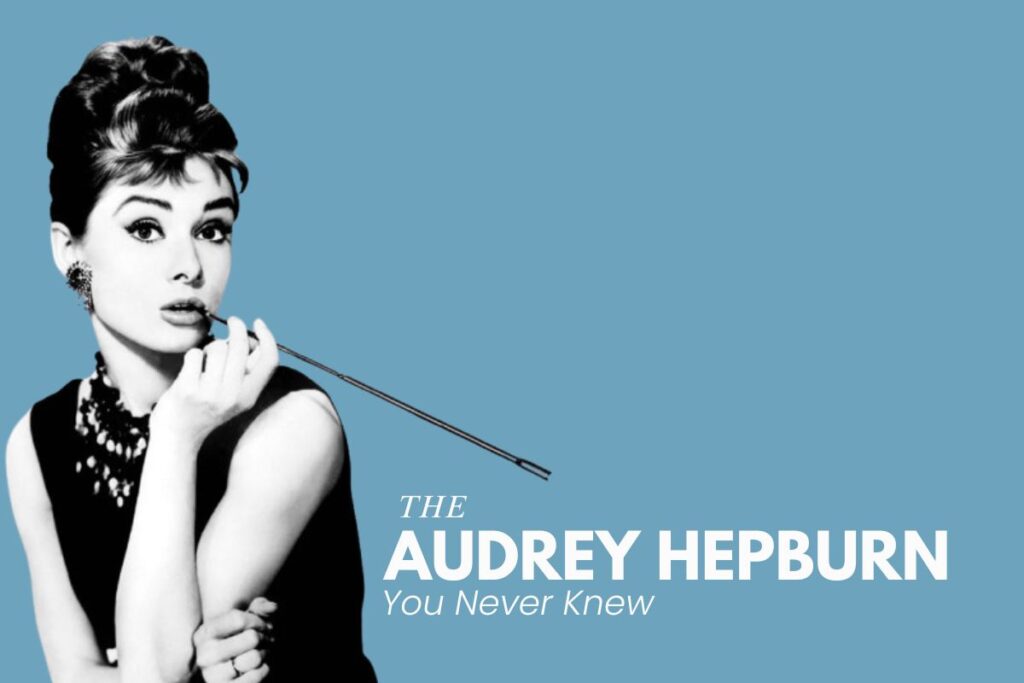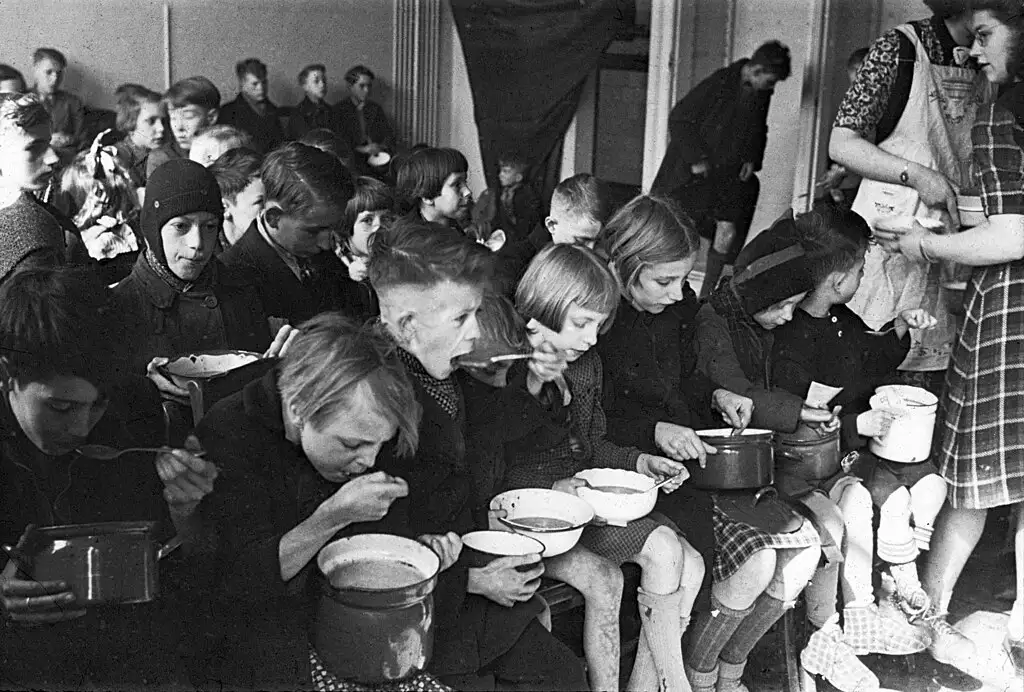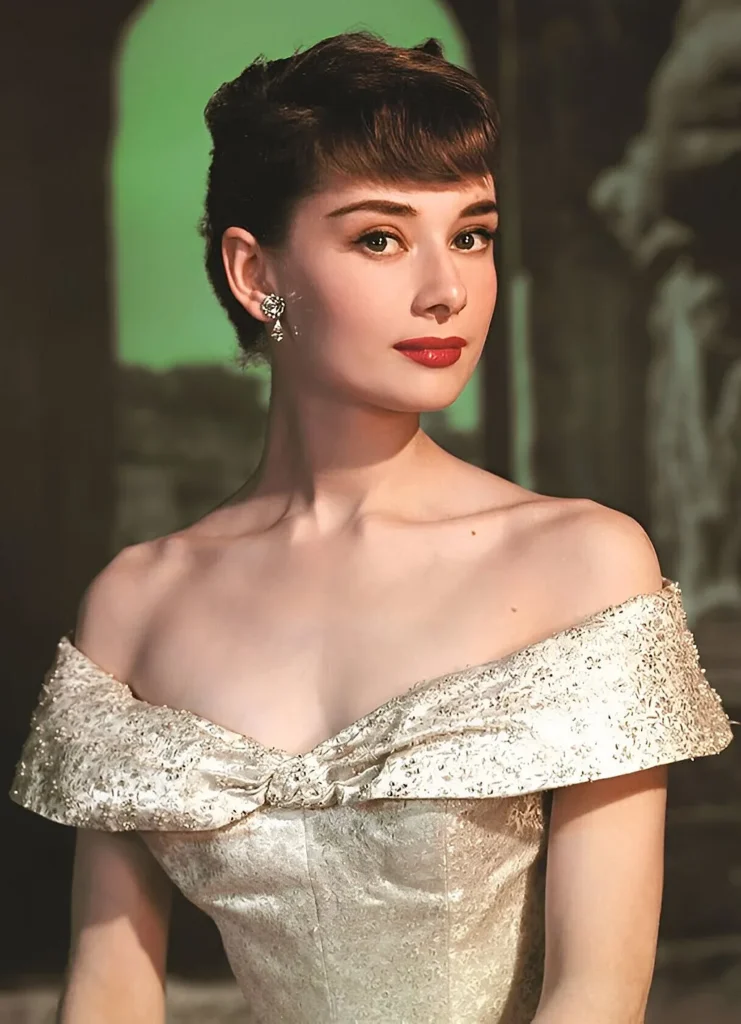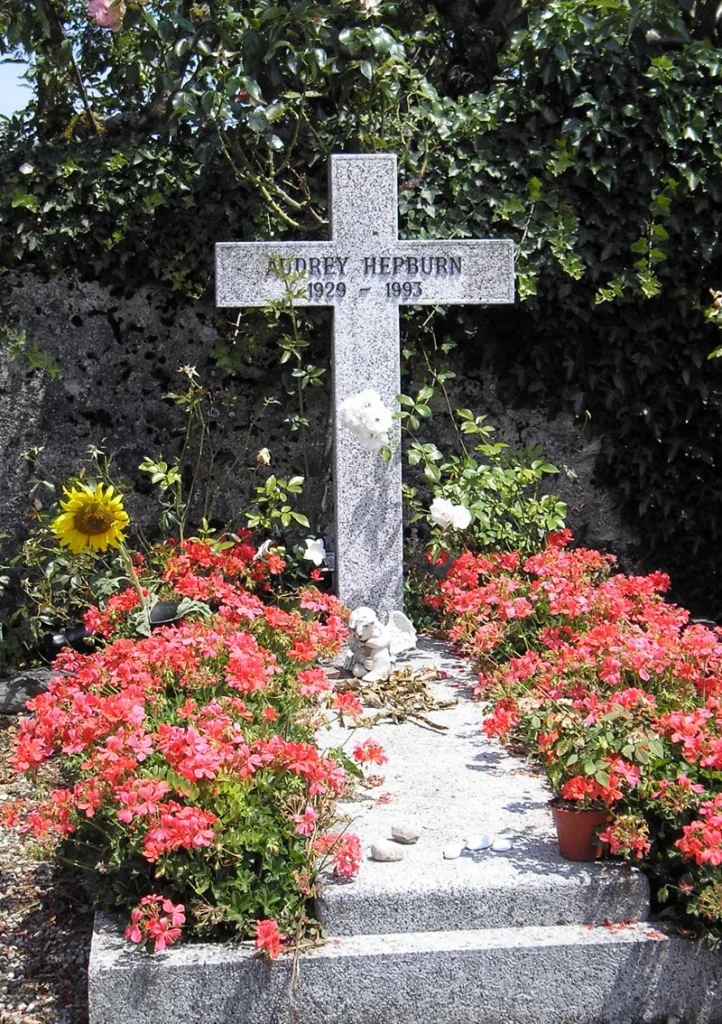
Audrey Hepburn’s name often conjures a single image: the little black dress, the cigarette holder, the window at Tiffany’s. But Audrey’s life was much more than the roles she played or the clothes she wore. She was a survivor before she was ever a star. She lived through war, hunger, and heartbreak. Her elegance came from quiet strength and a presence that needed no embellishment.
Born Between Borders
Audrey Kathleen Ruston was born on May 4, 1929, in Ixelles, a leafy neighborhood in Brussels, Belgium. Her mother, Ella van Heemstra, came from Dutch aristocracy and had been married before. Her father, Joseph Victor Anthony Ruston, was a British subject with vaguely Central European ancestry and a deep interest in politics.

Her early childhood passed between cities. She lived in Brussels, London, and The Hague. She learned English and Dutch at the same time, and later added French, Italian, and Spanish. These constant moves created a strange sense of detachment. She would later say that she never fully belonged to one place.
Her father’s political leanings shaped the household in unsettling ways. He became an open supporter of the British Union of Fascists. In 1935, when Audrey was just six, he walked out on the family without a word. The separation shattered her sense of stability. She would spend years longing for his return, and later called it the most painful event of her life.
Life Under Occupation
In 1939, with Europe sliding into war, her mother moved the family to Arnhem in the Netherlands. She believed the country’s neutrality would protect them. That hope collapsed in May 1940 when German forces invaded. Tanks rolled through the streets of Arnhem. Schools closed and food supplies became increasingly scarce.
Audrey was eleven when the occupation began. Her ballet lessons stopped while her family began to turn inward. Her mother advised her to stop speaking English in public, fearful that her British-sounding name would attract attention. Audrey began calling herself Edda van Heemstra, using her mother’s surname to avoid suspicion.
She spent much of the war indoors, looking out at a city that no longer felt familiar. The Netherlands, once peaceful, had become a place of checkpoints and whispered rumors. Any wrong move could bring danger. The sense of fear settled deep into her body.

Messages in Her Shoes
As the war dragged on, Audrey’s family became quietly involved in the Dutch resistance. Her uncle, Otto van Limburg Stirum, was executed by German forces in 1942 for resisting the occupation. Her half-brother was sent to a labor camp. Audrey herself joined the fight in the small ways that children could.
She carried messages from one part of Arnhem to another, hiding scraps of paper in her shoes. She also performed underground ballet recitals to raise money for resistance efforts. These secret events were held in people’s living rooms. The doors stayed locked, the curtains remained drawn, and the silence carried the weight of everything that could not be said or applauded.
She danced to survive, but also to help others survive .It was always about movement in a time of stillness, never the applause. She learned to make herself small, invisible, and alert. Her body became fluent in fear.
The Winter of Hunger
By late 1944, the Netherlands faced one of its worst humanitarian disasters. As Allied forces advanced and supply routes collapsed, German troops cut off food to parts of the country. The Dutch called it the Hunger Winter. Thousands starved that winter, including Audrey.
She survived on tulip bulbs and bread made from ground-up acorns. Her frame grew thinner as her cheeks hollowed and her legs lost their strength. Malnutrition scarred her body in ways that would never fully heal. She lost her stamina and strength, especially in her ankles. Her dream of becoming a professional ballerina slipped away.
Her health never recovered. Years later, she credited the war with shaping both her figure and her resolve. She was not thin by choice but shaped by the real hunger she had once endured. It stayed in her body and in her memory.

A Dancer Without a Stage
When the war ended in 1945, Audrey returned to ballet with urgency. She studied with Sonia Gaskell in Amsterdam, then moved to London and trained at the Rambert Ballet School. Teachers praised her grace and discipline, but warned that her body had been permanently weakened. She would not have the stamina required for professional performances.
She began modeling and taking small acting jobs to pay for lessons. Her posture and poise caught the attention of casting agents. She appeared in a handful of British films in uncredited roles, standing silently in the background. Even without speaking, she was noticed.
In 1951, while working as an understudy in a musical, she was invited to film a minor role in the south of France. That trip changed her life. French author Colette saw her walking through the hotel lobby and said, without hesitation, “Voila, my Gigi.” Audrey had just landed the lead in the Broadway play.

The Princess Effect
Her performance in Gigi received praise on Broadway, but her breakthrough came with Roman Holiday in 1953. Director William Wyler had been searching for a new face to star opposite Gregory Peck. Audrey’s screen test ran for several minutes. The crew kept the camera rolling even after the scripted lines ended. She smiled, scratched her face, and laughed nervously. That natural ease convinced Wyler she was the one.
The film was shot entirely in Rome, with Audrey playing a runaway princess who wants a day of freedom. She brought something entirely new to the screen. She carried no theatrics or excess. She was sincere, witty, and radiant.
Audrey won the Academy Award for Best Actress. Critics declared her arrival a new chapter in film history. She was graceful without being fragile. She made restraint magnetic.

Givenchy and the Look
When Audrey met Hubert de Givenchy in 1953, they formed a quiet revolution. Givenchy, then an up-and-coming designer, had been expecting Katharine Hepburn. He was surprised to find a young ballet-trained actress with wide eyes and no entourage. He agreed to work with her, and the results changed both their careers.
He designed many of her most iconic looks, from the black dress in Breakfast at Tiffany’s to her Oscars gowns. Together, they shaped a new aesthetic. It was clean, minimal, and timeless. Audrey preferred cropped pants, flat shoes, and boat necklines. She made elegance feel effortless.
Their partnership lasted decades, with him calling her his muse and her describing him as her closest friend in fashion. She shaped trends effortlessly, simply by staying true to herself.
A Quieter Life
Despite global fame, Audrey avoided the spotlight when she could. She married actor Mel Ferrer in 1954 and had her first son, Sean, in 1960. The marriage lasted more than a decade before ending in divorce. In 1969, she married Andrea Dotti, an Italian psychiatrist, and gave birth to her second son, Luca, in 1970.
Throughout the 1970s and 1980s, she turned down most film offers. She spent her time raising her children, walking in gardens, and reading poetry. She lived mostly in Switzerland, in a quiet village called Tolochenaz. When she did return to film, it was always on her terms.
Photographers still followed her, but she gave them very little. Her elegance felt genuine, shaped by knowing what mattered and allowing everything else to fade into the background.
Audrey Hepburn photographed by Henry Clarke in the gardens of “La Paisible” (her home) in Tolochenaz, Switzerland, February 1971. pic.twitter.com/vesOi0CB3m
— Audrey Hepburn in Paris (@rareaudrey) July 2, 2020
The Work That Mattered
In 1988, Audrey accepted a position as a goodwill ambassador for UNICEF. She had never forgotten what it felt like to be hungry. She believed children deserved better. Her mission took her to Ethiopia, Somalia, Bangladesh, and Vietnam. She held dying babies, sat beside mothers who had walked for miles, and listened with quiet attention.
She refused luxury accommodations. She traveled with a small team and read every report. She spoke in front of the United Nations and appeared in PSAs, but she never made herself the center. Her goal was to direct attention to the children, not herself.
She called the UNICEF work her true calling. By the time she became ill, she had completed more than fifty missions in over twenty countries.
A Farewell in Flowers
In 1992, Audrey was diagnosed with a rare form of abdominal cancer. She returned to her home in Switzerland and spent her final months surrounded by her family. Her last public appearance came at the Academy Awards in 1992, where she wore a simple white gown and walked gently across the stage.
She passed away on January 20, 1993. Her funeral was held quietly in Tolochenaz. UNICEF sent flowers from Ethiopia, where many children remembered her visits. She had never forgotten them, and they had not forgotten her.
The world remembered her in film stills and fashion sketches. But in her village, people remembered the woman who took long walks, smiled at neighbors, and spoke to children like they were equals.


